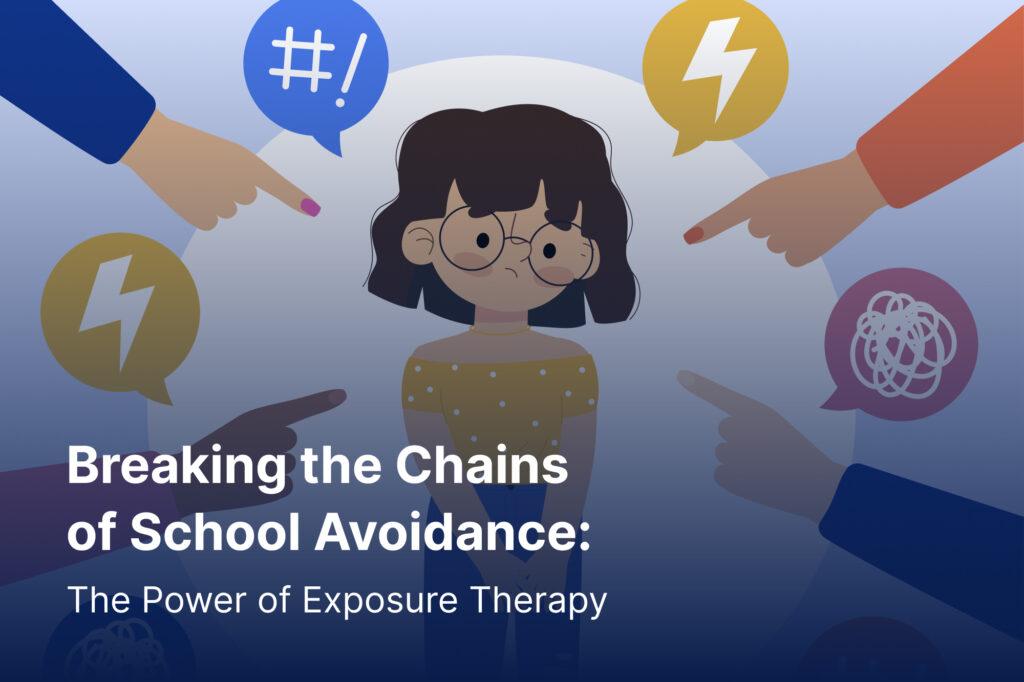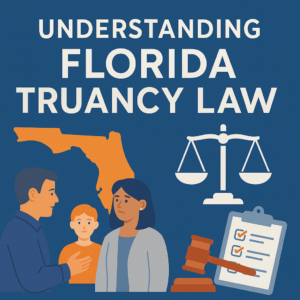School avoidance, a distressing phenomenon characterized by persistent and excessive reluctance or refusal to attend school or engage in school-related activities, can have far-reaching consequences on a child’s academic progress, social development, and emotional well-being. While the roots of school avoidance can be multifaceted, ranging from anxiety disorders and social difficulties to academic stress and traumatic experiences, one promising therapeutic approach offers hope in navigating this challenging terrain: exposure therapy.
Understanding the Weight of School Avoidance
School avoidance casts a long shadow over a child’s life, weaving its tendrils into various aspects of their daily existence. It manifests not only in physical complaints like stomachaches and headaches but also in emotional turmoil, social withdrawal, and academic struggles. Behind the facade of missed school days lies a complex web of fear, anxiety, and uncertainty, trapping children in a cycle of avoidance that robs them of the opportunities for growth, learning, and connection that school should provide.
The Beacon of Exposure Therapy
Amidst the darkness of school avoidance, exposure therapy emerges as a beacon of hope, illuminating a path towards healing and restoration. Grounded in the principles of cognitive-behavioral therapy (CBT), exposure therapy offers a systematic and evidence-based approach to confronting fears, dismantling avoidance behaviors, and reclaiming control over one’s life. Its efficacy lies in its ability to gently nudge children out of their comfort zones, guiding them through a process of gradual exposure to feared aspects of school while providing the scaffolding and support they need to navigate their journey.
In the following exploration, we delve into the transformative potential of exposure therapy for school avoidance, uncovering its key principles, processes, and benefits. Through firsthand accounts, expert insights, and practical guidance, we shed light on how exposure therapy can empower children to break free from the shackles of anxiety and step boldly into the world of learning, growth, and possibility. Join us on this journey as we discover the power of exposure therapy to unlock the doors to a brighter, more hopeful future for children struggling with school avoidance.
The Role of Exposure Therapy
In the intricate tapestry of addressing school avoidance, exposure therapy emerges as a pivotal thread, weaving its way through the complexities of fear, avoidance, and resilience. At its core, exposure therapy serves as a beacon of light, guiding children through the labyrinth of anxiety and empowering them to confront their fears head-on.
Unraveling the Layers of Fear and Avoidance:
Exposure therapy penetrates the layers of fear and avoidance that shroud a child’s perception of school, unraveling the knots of anxiety that bind them. By systematically exposing children to feared situations or stimuli related to school – whether it be entering the school building, interacting with peers, or participating in classroom activities – exposure therapy helps demystify the source of their anxiety and provides a safe space for exploration and growth.
Building Bridges to Confidence and Competence:
Through carefully crafted exposure exercises, exposure therapy acts as a bridge, spanning the chasm between fear and confidence. By gradually increasing exposure to school-related activities in a controlled and supportive environment, exposure therapy helps children build confidence in their ability to cope with anxiety-provoking situations and develop the skills needed to navigate the challenges of school life.
Disrupting the Patterns of Avoidance:
At its core, exposure therapy disrupts the patterns of avoidance that perpetuate school avoidance, challenging children to confront their fears rather than retreat from them. By encouraging children to resist the urge to engage in avoidance behaviors or safety strategies, exposure therapy helps break the cycle of avoidance and empowers children to face their fears with courage and resilience.
Empowering Children to Rewrite Their Narrative:
Perhaps most importantly, exposure therapy empowers children to rewrite their narrative – to reclaim their agency, rewrite their story, and redefine their relationship with school. By providing a safe and supportive space for exploration and growth, exposure therapy enables children to challenge negative beliefs about school, cultivate a sense of mastery and control, and envision a future filled with possibilities.
In the journey of overcoming school avoidance, exposure therapy serves as a trusted guide, illuminating the path forward and offering hope amidst the darkness. Through its transformative power, exposure therapy empowers children to break free from the chains of anxiety, reclaim their place in the classroom, and embrace the journey of learning, growth, and discovery with open arms.

The Process of Exposure Therapy for School Avoidance
Embarking on the journey of exposure therapy for school avoidance is akin to embarking on a quest, a courageous step towards conquering the dragons of anxiety and reclaiming the kingdom of education. This process unfolds in a series of carefully orchestrated steps, guided by skilled therapists and grounded in evidence-based practices.
Step 1: Assessment and Treatment Planning:
The journey begins with a thorough assessment, as therapists work closely with children and their families to understand the roots of their school avoidance. Through interviews, questionnaires, and observations, therapists gather insights into the specific triggers, fears, and avoidance behaviors that underpin the child’s anxiety. Armed with this knowledge, therapists collaborate with children and their families to craft a personalized treatment plan, outlining the goals, strategies, and timeline for exposure therapy.
Step 2: Establishing the Hierarchy of Exposure:
With the treatment plan in hand, therapists and children embark on the next phase of their journey: establishing the hierarchy of exposure. Like cartographers mapping out uncharted territory, therapists and children collaboratively identify the various challenges and milestones along the path to overcoming school avoidance. From the seemingly insurmountable task of entering the school building to the more manageable steps of sitting in a classroom or interacting with peers, each item on the exposure hierarchy represents a stepping stone towards reclaiming control over anxiety-provoking situations.
Step 3: Gradual Exposure to Anxiety-Provoking Situations:
With the hierarchy of exposure in place, the journey unfolds with a series of exposure exercises designed to gradually expose children to anxiety-provoking situations related to school. Like climbers ascending a mountain, children start with the foothills – the least anxiety-provoking tasks – and gradually work their way up to the summit, facing increasingly challenging scenarios along the way. Whether it’s visiting the school grounds during non-school hours, attending a brief session in the classroom, or engaging in structured activities with peers, each exposure exercise offers children an opportunity to confront their fears in a safe and supportive environment.
Step 4: Response Prevention and Coping Strategies:
As children navigate their exposure exercises, therapists provide guidance and support to help them resist the urge to engage in avoidance behaviors or safety strategies. Through response prevention techniques, children learn to tolerate discomfort and uncertainty, building resilience in the face of anxiety-provoking situations. Additionally, therapists equip children with coping strategies – such as deep breathing, positive self-talk, and mindfulness techniques – to help them manage anxiety and stay grounded during challenging moments.
Step 5: Reflection and Integration:
As the journey of exposure therapy unfolds, children and therapists take time to pause and reflect on their progress, celebrating victories, and learning from setbacks. Through reflection and integration, children gain insights into their strengths, challenges, and growth opportunities, paving the way for continued progress and success on their journey towards overcoming school avoidance.
In the tapestry of exposure therapy for school avoidance, each step is a thread, woven together with care and intentionality to create a path towards healing, growth, and resilience. Through the collaborative efforts of therapists, children, and families, exposure therapy offers a beacon of hope, guiding children out of the shadows of anxiety and into the light of possibility and empowerment.

Benefits of Exposure Therapy for School Avoidance
Exposure therapy emerges as a beacon of hope amidst the tumultuous landscape of school avoidance, offering a structured and evidence-based approach to untangling the knots of anxiety and reclaiming control over one’s life. As children embark on the journey of exposure therapy, they unlock a treasure trove of benefits that pave the way for healing, growth, and resilience.
1. Reduces Anxiety and Fear Responses:
At the heart of exposure therapy lies the transformative power to diminish anxiety and fear responses that grip children in the throes of school avoidance. Through systematic exposure to anxiety-provoking situations related to school, children learn that their fears are not as overwhelming or insurmountable as perceived. Gradually, anxiety diminishes, replaced by a sense of empowerment and mastery over previously dreaded scenarios.
2. Increases Comfort and Familiarity with School Environment:
Exposure therapy provides children with the opportunity to become acquainted with the school environment in a gradual and controlled manner. By stepping foot on school grounds, entering classrooms, and interacting with peers and teachers, children gradually acclimate to the sights, sounds, and routines of school life. As familiarity grows, the once-intimidating school environment transforms into a place of comfort and safety.
3. Improves School Attendance and Participation:
As children build confidence and resilience through exposure therapy, the barriers to attending school begin to crumble. With each successful exposure exercise, children gain the courage and motivation to overcome avoidance behaviors and participate more fully in school-related activities. The result is improved school attendance, increased engagement in learning, and a renewed sense of connection to the school community.
4. Enhances Coping Skills and Emotional Regulation:
Exposure therapy equips children with a toolkit of coping skills and strategies to manage anxiety and navigate challenges effectively. Through practice and repetition, children learn to identify and challenge negative thoughts, regulate their emotions, and cope with stressors in healthy and adaptive ways. These skills not only support children in overcoming school avoidance but also lay the foundation for lifelong resilience and well-being.
5. Fosters Independence and Self-Efficacy:
As children progress through exposure therapy, they experience a profound shift in their sense of agency and self-efficacy. By confronting their fears and overcoming obstacles, children discover their inner strength and resourcefulness, paving the way for greater independence and autonomy. With each successful exposure exercise, children reaffirm their belief in their ability to face challenges head-on and emerge victorious.
6. Promotes Social Integration and Peer Relationships:
Exposure therapy provides children with opportunities to engage in social interactions and build connections with peers in the school setting. As children participate in classroom activities, group projects, and extracurricular events, they develop social skills, forge friendships, and strengthen their sense of belonging within the school community. These social connections serve as a source of support and encouragement, bolstering children’s confidence and resilience.
In the tapestry of school avoidance, exposure therapy emerges as a guiding thread, weaving its way through the complexities of fear and avoidance to illuminate a path towards healing and growth. Through its transformative power, exposure therapy empowers children to break free from the chains of anxiety, reclaim their place in the classroom, and embrace the journey of learning, growth, and discovery with open arms.
Conclusion: Embracing the Journey of Healing and Growth
As the journey of exposure therapy for school avoidance draws to a close, children emerge from the shadows of anxiety, emboldened by newfound strength, resilience, and hope. Through the transformative power of exposure therapy, they have traversed the rugged terrain of fear and avoidance, guided by skilled therapists and supported by unwavering determination.
In the tapestry of their experience, they have woven threads of courage, perseverance, and self-discovery, each step forward a testament to their indomitable spirit and unwavering commitment to reclaiming their lives. Along the way, they have confronted their fears, challenged their beliefs, and embraced the unknown with open arms, emerging on the other side stronger, wiser, and more resilient than ever before.
As they stand on the threshold of a new chapter, they carry with them the lessons learned and the victories won, ready to embark on the next leg of their journey with confidence and optimism. Armed with a toolkit of coping skills, strategies, and newfound self-awareness, they face the future with courage and resilience, knowing that they are capable of overcoming whatever challenges lie ahead.
In the tapestry of their lives, exposure therapy serves as a guiding thread, illuminating the path forward and offering hope amidst the darkness. Through its transformative power, exposure therapy empowers children to break free from the chains of anxiety, reclaim their place in the classroom, and embrace the journey of learning, growth, and discovery with open arms.
As they bid farewell to the shadows of fear and avoidance, they step boldly into the light of possibility and empowerment, ready to embrace the journey of healing and growth that lies ahead. With each step forward, they rewrite their story, reclaim their agency, and chart a course towards a brighter, more hopeful future filled with endless possibilities. And though their journey may have been arduous, the destination is worth every step along the way – a life reclaimed, a spirit renewed, and a future filled with promise.







